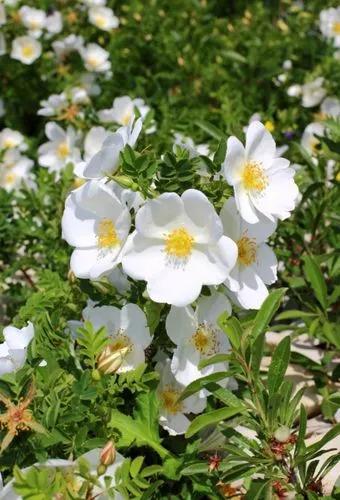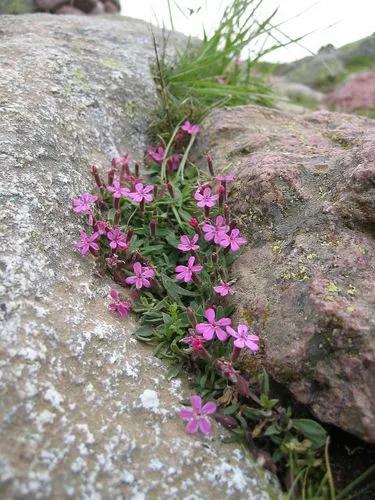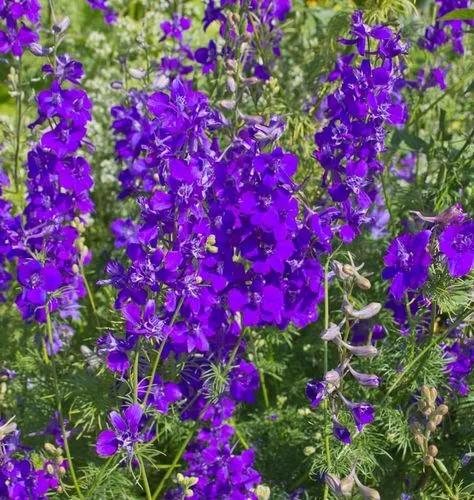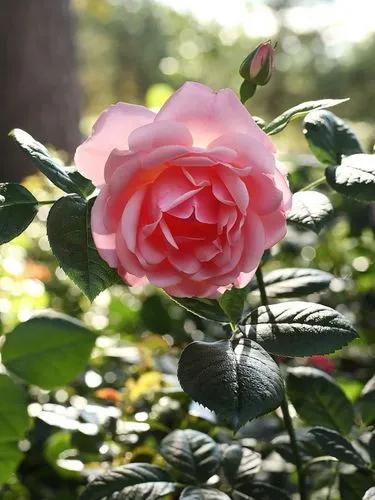Sweet Pea Shrub (Polygala × dalmaisiana) is a compact, ornamental, evergreen shrub. It's often also referred to by its other name, Polygala myrtifolia grandiflora. This milkwort hybrid is fast-growing and, in the right warm conditions, blooms in abundance from mid-spring right through the summer.It gets its name because the clusters of purplish-pink flowers it shows off look similar to those of the sweet pea plant. The foliage is a lovely gray shade, and this can add interesting contrast when planted alongside other species with normal green leaves.The Sweet Pea Shrub makes an excellent choice for use in mixed borders, as an accent shrub, a low, informal hedge, or when being displayed in decorative containers. It develops into a rounded mound and has a loose, relaxed appearance.The cut blooms also look impressive and last well in flower arrangements, although they don't have a strong fragrance. Although it won't flower as profusely, this delicate-looking shrub can tolerate temperatures into the low 20's, and it can handle a variety of well-drained soil types. Sweet Pea Shrub it isn't a very long-lasting plant, but it grows profusely and quickly and stays in bloom right through the summer. Polygala × dalmaisiana can be confused with the closely-related and similar-looking Polygala fruticosa, whose common name is Dwarf Sweet Pea Shrub.
Myrtle-leaf Milkwort Care
Polygala Myrtifolia



How to Care for the Plant

Water

While your Sweet Pea Shrub is establishing, it'll appreciate regular watering, especially through the summer months. You should make sure the soil doesn't dry out.Once the shrub is established, it's surprisingly drought-tolerant, although it won't perform as well and could die if the roots are allowed to dry out completely.

Pruning

Because this shrub can become rather leggy, pruning in early spring will help to ensure it keeps a compact and tidy shape. It will prevent too much bare trunk and sparsely blooming lower stems from developing and encourage abundant flowering.

Fertilizer

Using a slow-release fertilizer in the spring can encourage strong blooming.

Sunlight

Full sun or lightly dappled positions are best for the Sweet Pea Shrub. This will ensure they flower the most abundantly. If they get too much shade, they can become overly-leggy, and you won't see so many blooms.

Soil

Sweet Pea Shrubs can tolerate a wide variety of soil types, but their preference is for a well-drained, fertile soil that is rich in organic matter. They won't, however, appreciate an overly-wet and heavy soil.

Temperature

For best results, Sweet Pea Shrubs are best grown in warm, frost-free climates. They are, however, surprisingly winter hardy and can still survive when temperatures drop for a short period as low as 20° F.

Popularity

1,926 people already have this plant 283 people have added this plant to their wishlists
Discover more plants with the list below
Popular articles






